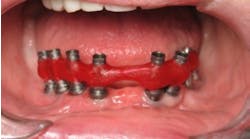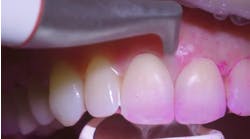Through the COVID-19 crisis, many dentists in the US and beyond have had to close their doors. But now, with vaccines being rolled out and new ways of working established, many dental offices have reopened and been able to stay open through the surges in virus exposure. However, with the return of patients, there have been challenges to overcome as dental professionals strive to deliver the best care while maintaining safety for their patients and their teams.
Digital opportunities
Although many may have felt as if they were forced into changing their ways of working, great opportunities have arisen as practices have begun to adopt more digital solutions. Perhaps the biggest visible change in health care and dentistry has been the explosion of telehealth and virtual appointments. This has radically changed patient point-of-care with the wide range of solutions that are now available to improve each step of the patient journey. Automated triage functions can be used to refer patients to the right clinician the first time; a combination of phone cameras and connected sensors allows remote monitoring; and patients can voice their symptoms through the smart capture of voice recording.
A different experience for patients
While some appointments can be done virtually, other digital solutions can be used to extend the positive patient experience even further. Calling patients for prescreening and follow-ups is nothing new, but it is time-consuming. Reaching every patient everywhere is nearly impossible through this older type of communication. Digital solutions allow communication with patients to be an integral part of the care pathway, because you can make sure your patients feel cared for even when they are not in your dental chair. COVID-19 prescreening is one of the more fundamental examples where digital solutions are opportunities, because patients can be screened for COVID-19 symptoms ahead of their visits, which protects everyone in the dental setting.
Extending this to postappointment aftercare support can increase the number of quality contacts you have with patients without increasing your workload. Seamless integration with your electronic health record (EHR) system enables data to go directly into patients’ charts, providing legal documentation of post-treatment support and patient satisfaction, in addition to protecting clinicians from future litigation. Patient records can be a resource for treatment metrics, pain assessment scores, and other research parameters.
Good for business now, required tomorrow
Patients are getting more and more comfortable with managing their health in a digital environment. Most can now book, change, and cancel appointments online. Giving patients these options benefits the practice’s bottom line and offers more quality touch points with patients, leading to higher patient retention and greater numbers of new patients.
Additionally, dental regulators are looking at what the new world has in store. National Institutes of Health (NIH)-sponsored randomized controlled trials in the US are demonstrating the value of automated data collection and triaging for patients and clinicians.1 Results indicate that there is a huge quality-of-care opportunity through dynamic patient self-assessment used to identify complications earlier and support preventive care.
Companies such as FollowApp help dental practices with all communications outside of the dental office. Patients can be reached with smart health check-ins through text messages (SMS communication) before and after their appointments; at-risk patients can be flagged; and two-way SMS communication can continue between you and your patients. Systems like these can help you find your best supporters and leverage them into valued new patients through automated refer-a-friend pathways and Google review prompts. Fully employing these digital solutions will increase both the quality of care you give to your patients and your production revenue.
Editor’s note: This article originally appeared in Perio-Implant Advisory, a newsletter for dentists and hygienists that focuses on periodontal- and implant-related issues. Perio-Implant Advisory is part of the Dental Economics and DentistryIQ network. To read more articles, visit perioimplantadvisory.com and subscribe at this link.
Reference
- Optimizing acute post-operative dental pain management using new health information technology (California). Agency for Healthcare Research and Quality. https://digital.ahrq.gov/ahrq-funded-projects/optimizing-acute-post-operative-dental-pain-management-using-new-hit









